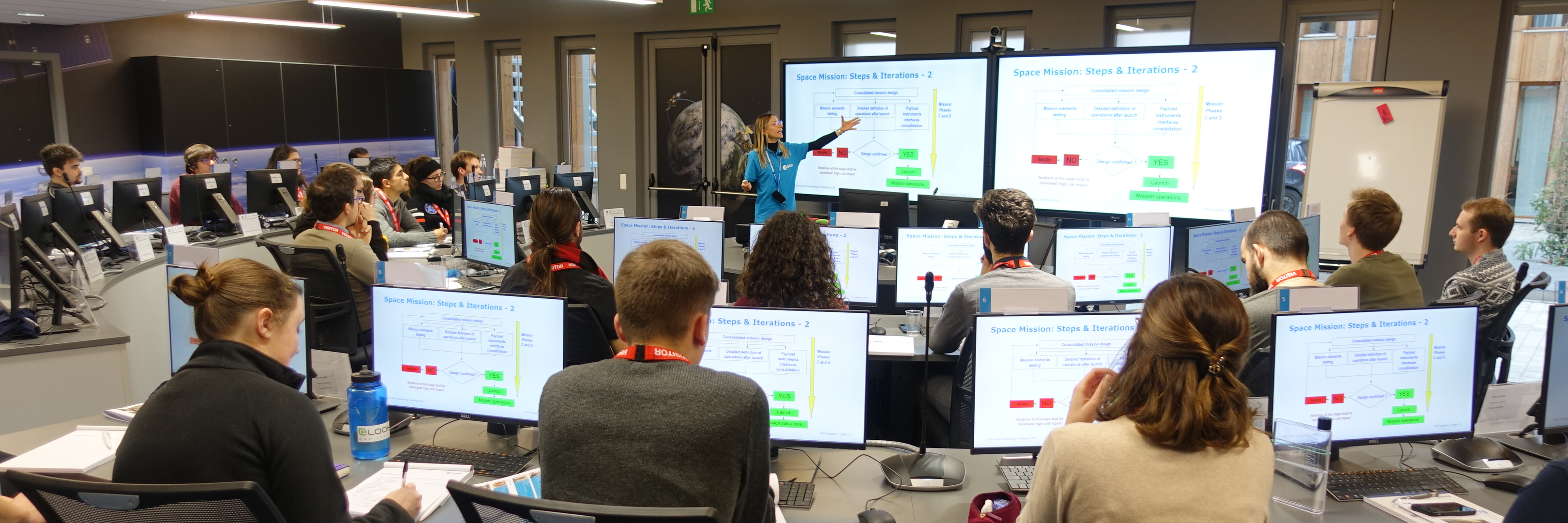120 university students take part in the Concurrent Engineering Challenge 2019!
Saturn’s icy moon Enceladus was the target of ESA Academy’s Concurrent Engineering Challenge 2019. Would participants be able to use the Concurrent Engineering approach to design a mission to explore this mysterious faraway world?
30 university students from 14 different ESA Member States rose to the challenge, and travelled to ESA Academy’s Training and Learning Facility, ESEC-Galaxia, Belgium, from 11 to 15 November 2019. On-hand to provide guidance were two ESA Experts, ably assisted by a Swiss National Trainee, from ESA’s Systems and Concurrent Engineering Section.
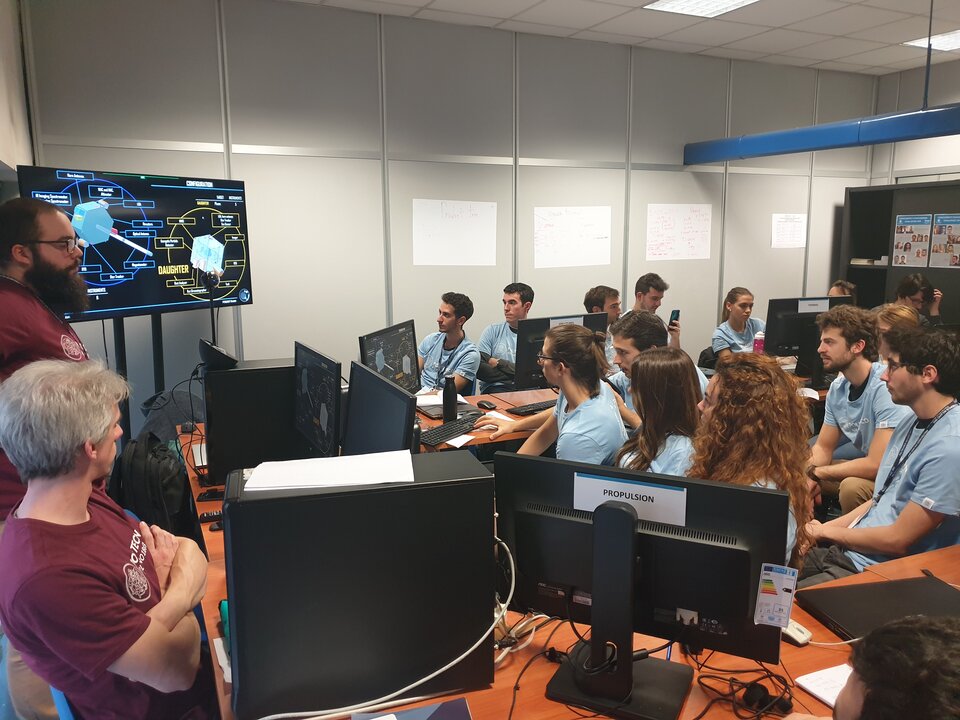
This cohort of students were also joined by three other groups, participating remotely in three European universities: Cranfield University (U.K.), Politecnico di Milano (Italy), and KTH Royal Institute of Technology (Sweden). Each site is home to its own Concurrent Engineering Facility (CEF), installed especially for the Challenge. In total, 120 university students participated, with the ultimate goal of familiarising the next generation of space scientists and engineers with the Concurrent Engineering approach, and the added bonus of helping universities to develop their CEFs. Explained the organisers from Cranfield, “we must say it has inspired us to incorporate Concurrent Engineering activities into our Masters teaching. It has been incredible to see how effective this way of working is in developing and consolidating knowledge across all the different space engineering disciplines.”
Importantly, the four groups did not compete against each other. Instead, they used video conferencing and a live forum to share each day’s progress, raise any particular difficulties they were facing, and receive helpful input from the participants in the other groups. The educational value of sharing results was underlined by the organisers from KTH: “A great learning experience for both supervisors and students which was enhanced by the benchmarking with the other teams.”
In each CEF, students were divided into teams of two to five in order to cover the different disciplines: Configuration, Structures, Propulsion, Trajectory Analysis, Attitude & Orbit Control Subsystems, Power, Thermal, Communications & Data Handling, Mechanisms.
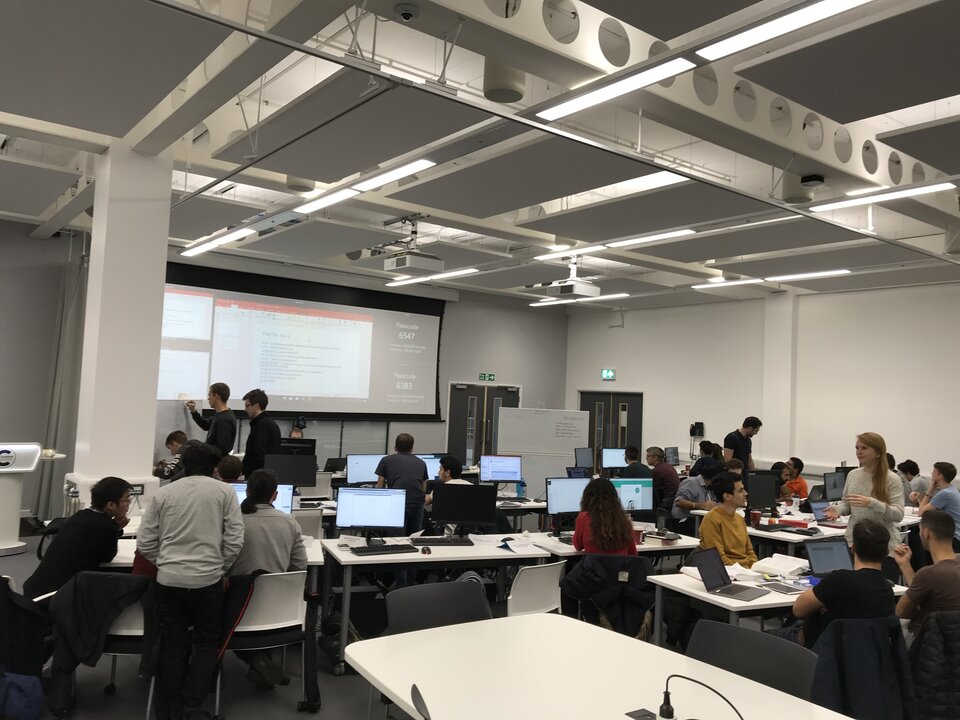
On the evening of their arrival in Belgium, students at ESEC-Galaxia played the EcoDesign game as an ice-breaker and discovered the environmental impacts of space missions. They asked many interesting questions and it was a good opportunity for them to study the lifecycle assessment of a satellite. On Monday morning, all locations connected through video conferencing for the first time to get an introduction to the Concurrent Engineering approach from the Head of ESA’s Systems and Concurrent Engineering Section, prior to attendees experimenting with the Open Concurrent Design Tool (OCDT) that they would be using throughout the week to share design data with each other. They also learnt about ESA and the ESA Academy programme. To round off day one, the students were introduced to the other locations and their facilities. Finally, the goal of the week was revealed: design a mission to Enceladus!
Enthused with their new knowledge, the groups proceeded to perform a first Concurrent Engineering iteration, deriving mission phases, operative modes, functions and start working on different subsystem designs by making initial computations and systems budgets. Each group then shared their progress with their colleagues located at the other CEFs. Comparisons and discussions were made. Before long, potential critical disciplines were identified in the areas of trajectory selection and power design. Improvements were required!
During the second iteration a potentially critical problem was discovered: the spacecraft’s propellant was raising the total mass too high, necessitating a major redesign, including altering the interplanetary and objective trajectories. Such a setback would have deterred lesser students, but the attendees took everything in their stride. Offering some respite for the ESEC group was a visit to ESEC-Redu and the Proba operations room.
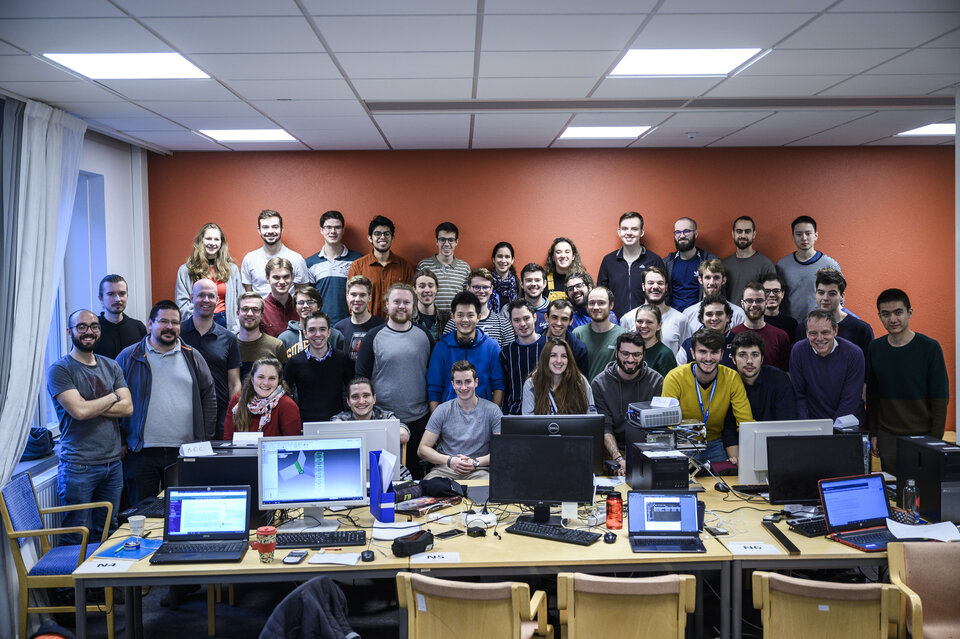
On the final day, each group froze their results and then presented their mission plans. It was fascinating to compare designs and different methods of overcoming shared problems.
The ESEC group called their mission Enceladus Plume Imaging Craft (EPIC), intended to deliver unprecedented scientific data about the distant moon. The mission would perform a journey around the Solar System, exploiting different manoeuvres around Venus, Earth, the Moon, and Saturn, in order to efficiently reach Enceladus. Thanks to a formation flight between Enceladus and the satellite, and via a careful system design, the mission would then deliver the required scientific data, helping scientists to investigate the geological and biological characterisation of Enceladus.
The scale of the task meant that not all groups were able to fully meet the mission requirements and constraints, although the effort put in was admirable, and all designs had strong and unique features. However, everyone agreed that concurrent engineering is a very effective approach that can be used both in a professional setting as well as academia. As summarised by the organisers from Milan: “The Challenge was a unique opportunity and experience for Politecnico di Milano to put in place real Concurrent Engineering to locally and remotely interact to converge on a feasible design to a very challenging mission to Enceladus. The team work was greatly effective for them and the university wants to take the opportunity to build a permanent facility to give students the opportunity to directly experience the real working process strongly based on collaboration and sharing of expertise and discussions for a more powerful final result.”
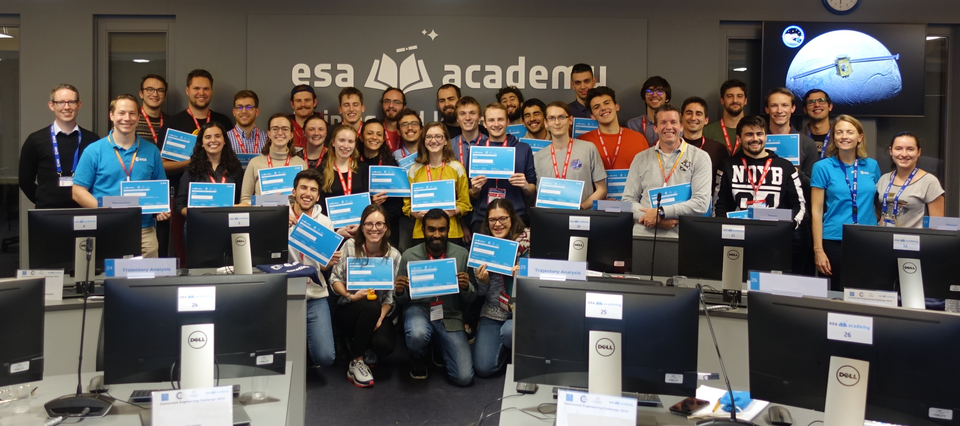
A final word from one of the participating students:
“I am really grateful for the opportunity that ESA Academy has given me. First of all, because the Concurrent Engineering Challenge has allowed me to get closer to a space mission, becoming more familiar with the way it works as well as getting to know the incredible people I was going to work with during the week. This is why I have found the Challenge a really enriching experience. And secondly, it has been really outstanding meeting people that are working on real space missions and asking them all the queries we had regarding the promotion of our professional careers.”
For more information about future ESA Academy training opportunities, please check this page.
Contact: tlp@esa.int


